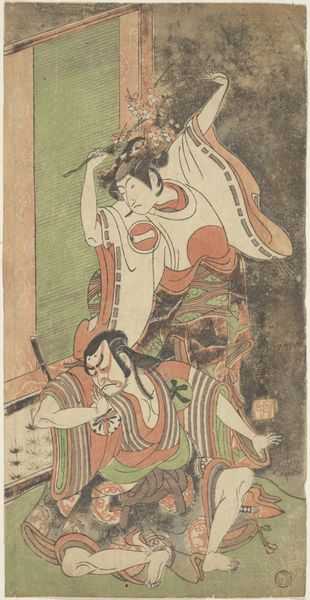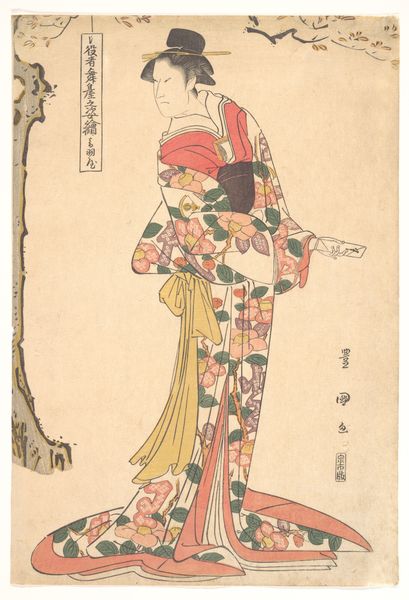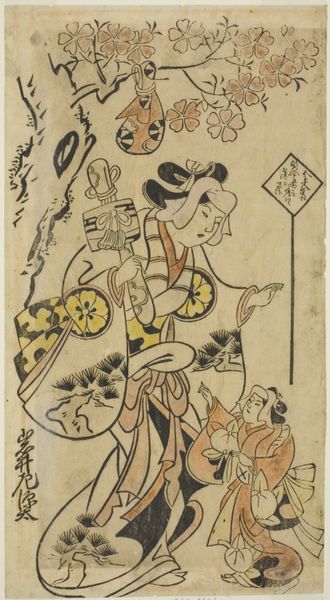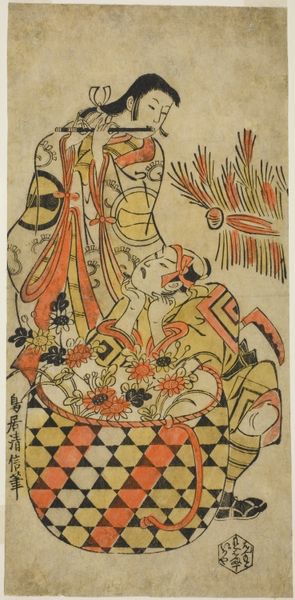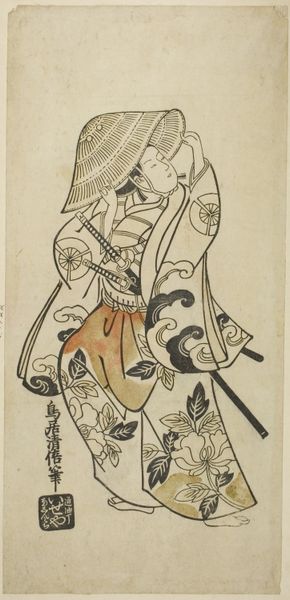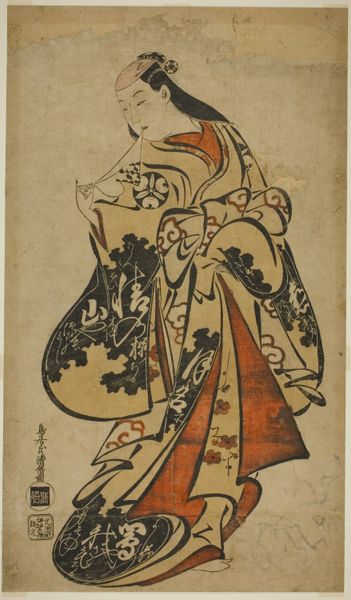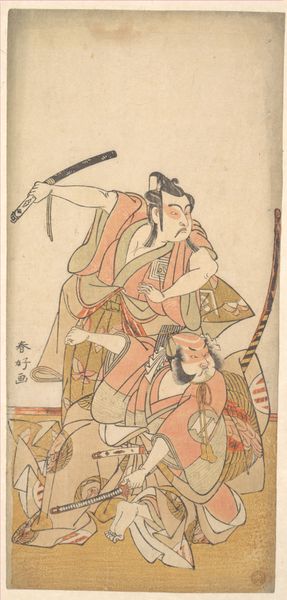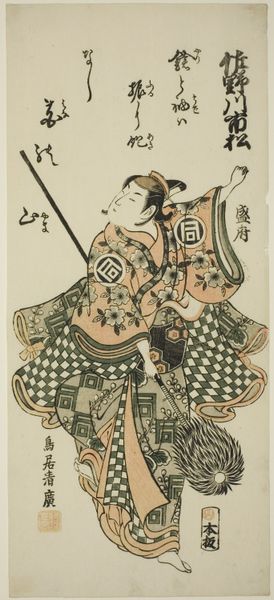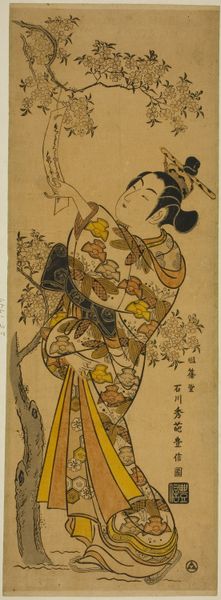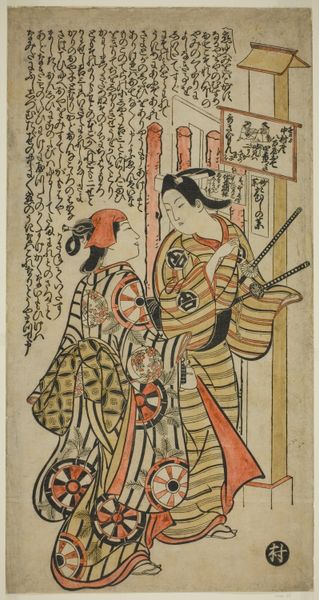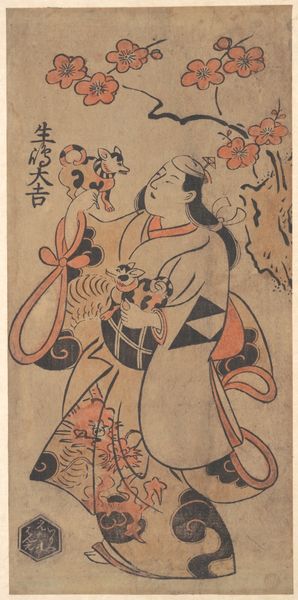
The Actors Ichikawa Monnosuke I and Tamazawa Rinya c. 1715
0:00
0:00
print, woodblock-print
#
portrait
# print
#
asian-art
#
ukiyo-e
#
figuration
#
woodblock-print
Dimensions: 55.8 × 31.7 cm (22 × 12 3/8 in.)
Copyright: Public Domain
Curator: Torii Kiyomasu I’s woodblock print, “The Actors Ichikawa Monnosuke I and Tamazawa Rinya," dates back to around 1715. It’s currently held here at The Art Institute of Chicago. What are your immediate thoughts? Editor: Something about that slightly distressed paper, the way the colors pop in contrast—it evokes a feeling of faded glory, almost melancholic. Despite the subject being actors, I'm sensing a certain wistfulness. Curator: That’s interesting. I'm drawn to the layering of symbolism. Notice the blossom branch overhead. The "floating world" aspect of Ukiyo-e often touched upon the transient nature of beauty and pleasure, themes frequently associated with blossoms. These actors themselves represent figures adored, yet their fame is inevitably fleeting. Editor: Exactly. The large circular motifs on their robes—family crests perhaps?—they feel monumental and imposing, but they’re also flat, graphic. The artist balances depth with a very stylized presentation. Are we meant to consider that even tradition becomes performative? Curator: It's a complex read, I believe. Consider the actor's faces; one seems lost in thought, while the other’s gaze is averted. This absence of direct engagement contributes to the overall introspective mood, diverging, I'd argue, from the exuberant displays Kabuki theater is famous for. Editor: Absolutely. The hats cast shadows, obscuring their features. They aren't presenting themselves fully, adding another layer of… veiled reality, maybe? These theatrical portraits often mask, intentionally, far more than they reveal, especially of queer themes present in kabuki which are deliberately obfuscated or abstracted to remain hidden. Curator: I like that "veiled reality". It gets to the heart of Ukiyo-e prints—they're reflections of a constructed world. Perhaps the key lies not in searching for simple truths, but rather appreciating the artist’s sensitivity and visual language through evocative symbols. Editor: And understanding that, even three hundred years later, this image continues to elicit such introspection, that is a testament to Kiyomasu's genius and art historical continuity in themes of symbolism and their layered interpretation. It certainly lingers in the mind.
Comments
No comments
Be the first to comment and join the conversation on the ultimate creative platform.
